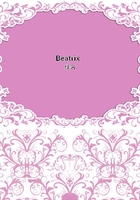
第5章 I(4)
The gate when open gives a vista into a somewhat vast court-yard, on the right of which are the stables, on the left the kitchen and offices. The house is build of freestone from cellar to garret. The facade on the court-yard has a portico with a double range of steps, the wall of which is covered with vestiges of carvings now effaced by time, but in which the eye of an antiquary can still make out in the centre of the principal mass the Hand bearing the sword. The granite steps are now disjointed, grasses have forced their way with little flowers and mosses through the fissures between the stones which centuries have displaced without however lessening their solidity. The door of the house must have had a charming character. As far as the relics of the old designs allow us to judge, it was done by an artist of the great Venetian school of the thirteenth century. Here is a mixture, still visible, of the Byzantine and the Saracenic. It is crowned with a circular pediment, now wreathed with vegetation,--a bouquet, rose, brown, yellow, or blue, according to the season. The door, of oak, nail-studded, gives entrance to a noble hall, at the end of which is another door, opening upon another portico which leads to the garden.
This hall is marvellously well preserved. The panelled wainscot, about three feet high, is of chestnut. A magnificent Spanish leather with figures in relief, the gilding now peeled off or reddened, covers the walls. The ceiling is of wooden boards artistically joined and painted and gilded. The gold is scarcely noticeable; it is in the same condition as that of the Cordova leather, but a few red flowers and the green foliage can be distinguished. Perhaps a thorough cleaning might bring out paintings like those discovered on the plank ceilings of Tristan's house at Tours. If so, it would prove that those planks were placed or restored in the reign of Louis XI. The chimney-piece is enormous, of carved stone, and within it are gigantic andirons in wrought-iron of precious workmanship. It could hold a cart-load of wood. The furniture of this hall is wholly of oak, each article bearing upon it the arms of the family. Three English guns equally suitable for chase or war, three sabres, two game-bags, the utensils of a huntsman and a fisherman hang from nails upon the wall.
On one side is a dining-room, which connects with the kitchen by a door cut through a corner tower. This tower corresponds in the design of the facade toward the court-yard with another tower at the opposite corner, in which is a spiral staircase leading to the two upper stories.
The dining-room is hung with tapestries of the fourteenth century; the style and the orthography of the inscription on the banderols beneath each figure prove their age, but being, as they are, in the naive language of the /fabliaux/, it is impossible to transcribe them here.
These tapestries, well preserved in those parts where light has scarcely penetrated, are framed in bands of oak now black as ebony.
The ceiling has projecting rafters enriched with foliage which is varied for each rafter; the space between them is filled with planks painted blue, on which twine garlands of golden flowers. Two old buffers face each other; on their shelves, rubbed with Breton persistency by Mariotte the cook, can be seen, as in the days when kings were as poor in 1200 as the du Guaisnics are in 1830, four old goblets, an ancient embossed soup-tureen, and two salt-cellars, all of silver; also many pewter plates and many pitchers of gray and blue pottery, bearing arabesque designs and the arms of the du Guaisnics, covered by hinged pewter lids. The chimney-piece is modernized. Its condition proves that the family has lived in this room for the last century. It is of carved stone in the style of the Louis XV. period, and is ornamented with a mirror, let in to the back with gilt beaded moulding. This anachronism, to which the family is indifferent, would grieve a poet. On the mantel-shelf, covered with red velvet, is a tall clock of tortoise-shell inlaid with brass, flanked on each side with a silver candelabrum of singular design. A large square table, with solid legs, fills the centre of this room; the chairs are of turned wood covered with tapestry. On a round table supported by a single leg made in the shape of a vine-shoot, which stands before a window looking into the garden, is a lamp of an odd kind. This lamp has a common glass globe, about the size of an ostrich egg, which is fastened into a candle-stick by a glass tube. Through a hole at the top of the globe issues a wick which passes through a sort of reed of brass, drawing the nut-oil held in the globe through its own length coiled like a tape-worm in a surgeon's phial. The windows which look into the garden, like those that look upon the court-yard, are mullioned in stone with hexagonal leaded panes, and are draped by curtains, with heavy valances and stout cords, of an ancient stuff of crimson silk with gold reflections, called in former days either brocatelle or small brocade.
On each of the two upper stories of the house there are but two rooms.